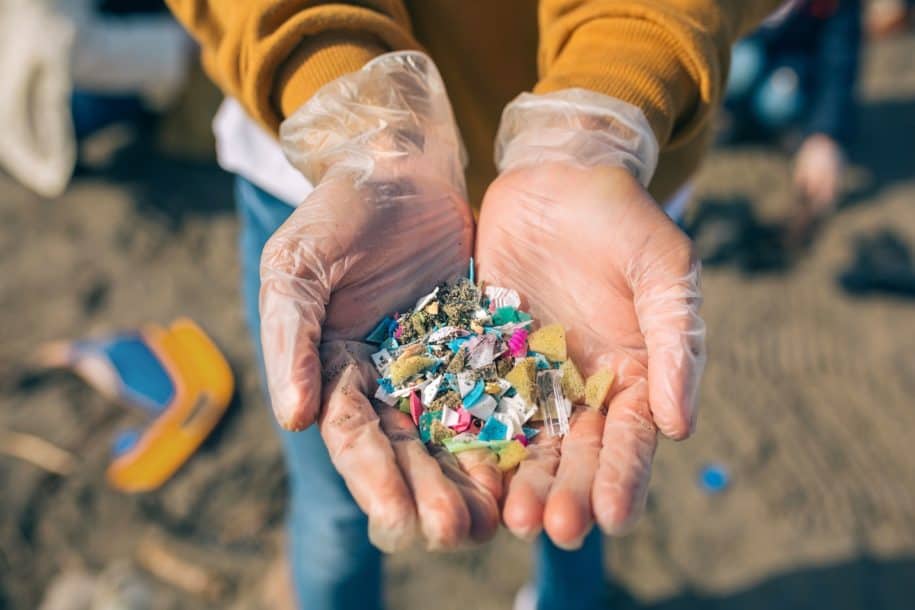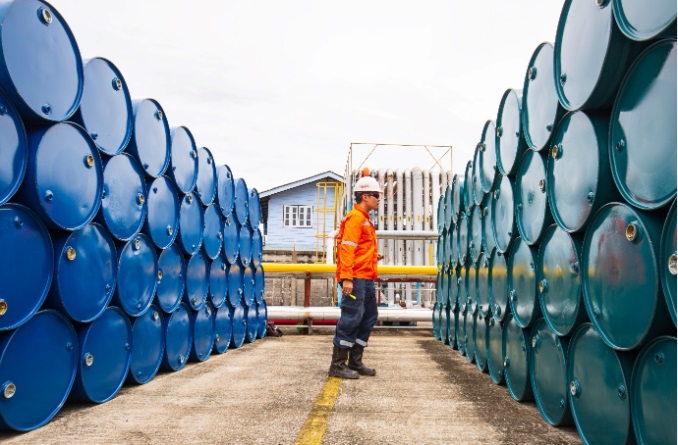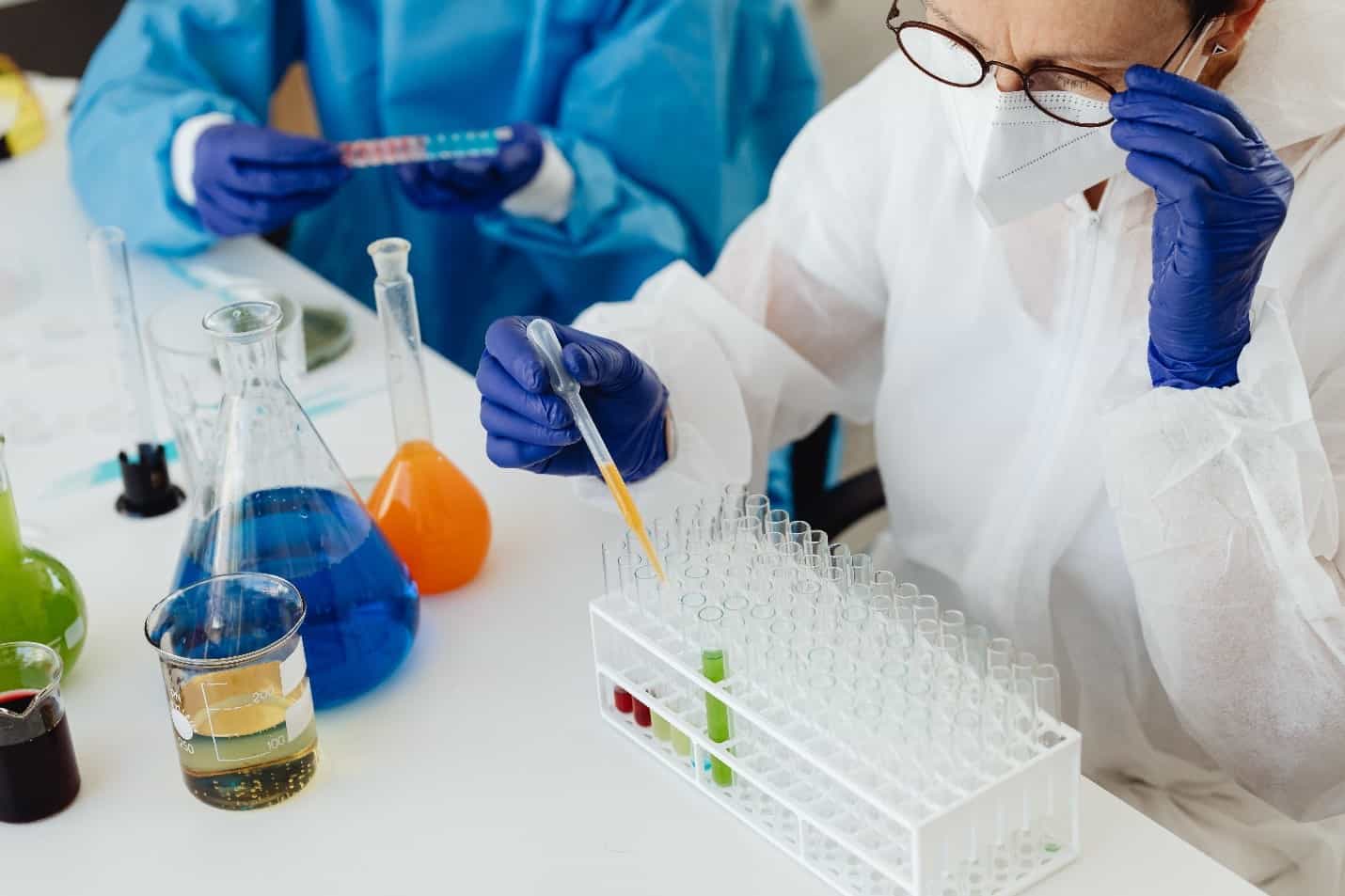Plastic has become a part of our day to day life because of its low-cost, durability, and versatility. Despite these benefits, we cannot ignore its adverse effects on the environment stemming from littering and mismanaged waste. In every corner of the earth, small chunks of degraded plastic, plastic beads, and synthetic fibers have begun to show up. These particles can cause a potential life threat to animals, marine life, and human beings.
Tiny pieces of plastic that are smaller than 5 mm in size are referred to as microplastics. Even though they are small in size, they have the capability to pollute water, soil, and air. Microplastics are classified into two types: primary and secondary microplastics. Primary microplastics are used as raw materials in the manufacture of everything from containers
and cosmetics to clothing and personal care products. The process of breaking down large plastic items into thousands of smaller pieces is known as fragmentation. These smaller, fragmented pieces are called secondary microplastics.
Microplastics enter the ecosystem via various pathways from a variety of sources. Some of the sources include synthetic textiles, plastic litter, tires, cosmetics, plastic water bottles, and certain discharges from shipping and manufacturing processes. Microplastics release to land due to plastic littering, mismanaged waste, and sewage sludge. The release of microplastics into freshwater lakes and oceans is due to inadequate waste disposal, illegal dumping, litter transported by wind, or from land. Several studies have shown that microplastic litter reaches oceans from rivers with particles that often originate on land.
Due to the lightweight nature, many of the microplastics are carried by wind and dust. According to scientific studies, it is estimated that around 4.8 to 12.7 million tons of plastic waste are entering into the oceans. Scientists are continuing to assess the risks through research to better understand and prevent the spread of microplastics. A researcher in microplastics at Strathclyde University in Scotland, Steve Allen, states that “Plastics in the environment carry all sorts of pesticides, heavy metals and all the other chemicals that we’ve made over time.” Additionally, he includes, “They’re going to carry them directly into our lungs.”
The harmful effects of microplastics can harm humans from the water we drink, to the air we breathe, as well as the soil where we grow our food. Intake of these pollutants over a long period of time may alter human chromosomes and may eventually lead to obesity, infertility, and sometimes cancer.
The threat behind this microplastic problem has been overlooked for many years and has been identified lately as a significant issue. Severe actions are necessary to curtail the use of plastics and simultaneously fund research to develop eco-friendly materials. Enhancements in the production of plastic, reducing usage, and proper disposal can reduce plastic pollution in the long run. Adopting broader and effective programs around the strategy “Reduce, Recycle, and Reuse” would help us realize a plastic-free world.
For more details: Click here & Contact SafetyStratus Now
AUTHOR BIO

Satya is the resident Chemical Engineer here at SafetyStratus. She is focused on supporting and improving the Chemical Inventory and related products and services for the SafetyStratus platform. She has recently completed her master’s degree in Chemical Engineering. While relatively new to the business world, she has conducted cutting edge research, participated in several notable projects, and worked at a refinery, a steel processing plant, and, most notably, for the Center of Atomic Research. She is eager to use her skills and talents to share knowledge with the broader EHS community.
Follow @Satya: Linkedin
References:
- http://nora.nerc.ac.uk/id/eprint/518866/1/N518866PP.pdf
- https://journals.openedition.org/factsreports/5257
- https://www.researchgate.net/profile/Nirban_Laskar/publication/331738883_Plastics_and_microplastics_A_threat_to_environment/links/5d64e8dea6fdccc32cd343af/Plastics-and-microplastics-A-threat-to-environment.pdf
- https://www.ncbi.nlm.nih.gov/pmc/articles/PMC6651478/



